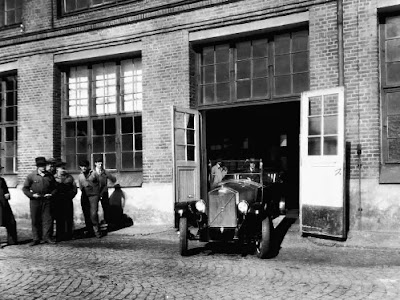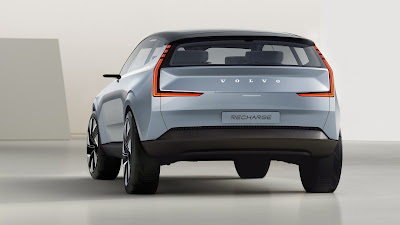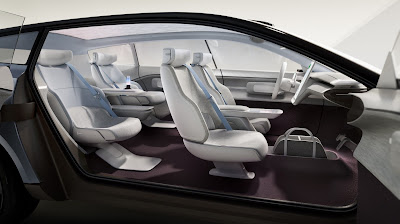The official website of Volvo is,
www.volvo.com
The official website of volvo group is,
www.volvogroup.com
Volvo trademark was used by two separate companies: Volvo Group – a manufacturer of trucks, buses and construction equipment (among others) owned by Swedish interests.
Which sold their Volvo car corporation unit to the Ford company.
Volvo Car Corporation was under the ownership of Ford until 2010 when it was sold to Geely Automobile of China which owns over 15 other vehicle makers.
The Volvo Group (Swedish: Volvokoncernen; legally Aktiebolaget Volvo, shortened to AB Volvo, stylized as VOLVO) is a Swedish multinational manufacturing corporation headquartered in Gothenburg. While its core activity is the production, distribution and sale of trucks, buses and construction equipment, Volvo also supplies marine and industrial drive systems and financial services. In 2016, it was the world's second-largest manufacturer of heavy-duty trucks with its subsidiary Volvo Trucks.
Automobile manufacturer Volvo Cars unit, also based in Gothenburg, was part of AB Volvo until 1999, when it was sold to the Ford Motor Company. Since 2010 Volvo Cars has been owned by the automotive company Geely Holding Group. Both AB Volvo and Volvo Cars share the Volvo logo and cooperate in running the Volvo Museum in Sweden.
History
The brand name Volvo was originally registered as a trademark in May 1911 with the intention to be used for a new series of SKF ball bearings. It means "I roll" in Latin, conjugated from "volvere". The idea was short-lived, and SKF decided to simply use its initials as the trademark for all its bearing products.
Ball bearing
In 1924, Assar Gabrielsson, an SKF sales manager, and Gustav Larson, a KTH educated engineer, decided to start construction of a Swedish car. They intended to build cars that could withstand the rigors of the country's rough roads and cold temperatures.
AB Volvo began activities on 10 August 1926. After one year of preparations involving the production of ten prototypes, the firm was ready to commence the car-manufacturing business within the SKF group. The Volvo Group itself considers it started in 1927, when the first car, a Volvo ÖV 4, rolled off the production line at the factory in Hisingen, Gothenburg.
Volvo First car
On the morning of 14 April 1927, the first Volvo car drove out through the factory gates in Gothenburg on the west coast of Sweden. The car was officially called the ÖV4 and it was an open tourer with a four-cylinder engine. The world's first Volvo was ready to hit the road.
Only 280 cars were built that year.
1927 – Volvo first car rolls out from the factory
Volvo First Truck
The first truck, the "Series 1", debuted in January 1928, as an immediate success and attracted attention outside the country. In 1930, Volvo sold 639 cars, and the export of trucks to Europe started soon after; the cars did not become well known outside Sweden until after World War II.
Volvo truck series 1
AB Volvo
AB Volvo was introduced at the Stockholm Stock Exchange in 1935 and SKF then decided to sell its shares in the company. By 1942, Volvo acquired the Swedish precision engineering company Svenska Flygmotor (later renamed as Volvo Aero).
Pentaverken, which had manufactured engines for Volvo, was acquired in 1935, providing a secure supply of engines and entry into the marine engine market.
Volvo First Bus
The first bus, named B1, was launched in 1934, and aircraft engines were added to the growing range of products at the beginning of the 1940s.
Volvo bus B 1
Volvo First Tank
Volvo was also responsible for producing the Stridsvagn m/42 m during the second World war cars production slowed.
Stridsvagn m/42 (Strv m/42) was a Swedish medium tank in service in the World War II period. Known by its manufacturer AB Landsverk as Lago II-III-IV, it fielded a 75 mm L/31 gun, the first of its size in a Swedish tank. It entered service with the Swedish Army in April 1943. Modern in design and mobile, a total of 282 were produced.
Stridsvagn m/42 (1943)
Volvo little car
On 1 September 1944, the car that would make Volvo an international car company was unveiled in Stockholm. “The little Volvo”, as it was called, was seen in Sweden as a promise of post-war prosperity and in the course of two weeks 2,300 people placed orders for the PV 444.
Volvo Pv444
Volvo estate car
The Volvo estate cars story begins with Duett
The Volvo Duett was launched as “two cars in one” – for both work and leisure. It was the first in a long line of estates that have made Volvo synonymous with this type of practical car. Since then, more than 6 million Volvo estates have been made.
Volvo estate Duett
Volvo sports car
Like many car manufacturers, Volvo did foray into the world of Sports cars with their P1900, which was launched in 1956.
Volvo P1900
However, this had a short production run, but was later replaced with the P1800.
The P1800 found fame in the TV series “The Saint”, with Roger Moore behind the wheel.
Volvo P1800
Volvo safety marks
Then Volvo starts export to the USA in 1955.
And introduced some new safety measures in the production like three point safety belts .
Volvo international reputation for advanced safety was confirmed when the US Government bought 24 cars of the model Volvo 240 for extensive crash testing. As a result of the tests, Volvo was officially chosen at the time as the benchmark to set safety standards for all new cars.
Volvo 240 station wagon
In 1950, Volvo acquired the Swedish construction and agricultural equipment manufacturer Bolinder-Munktell. Bolinder-Munktell was renamed as Volvo BM in 1973. In 1979, Volvo BM's agricultural equipment business was sold to Valmet. Later, through restructuring and acquisitions, the remaining construction equipment business became Volvo Construction Equipment.
Volvo Excavator
Volvo A30 G Dump truck
New orientation - more brands
The Volvo Group acquired RVI/Mack with the aim of growing within the truck sectors in both the USA and Europe. Following this deal, the Group acquired two new brands, Mack and Renault Trucks.
Ford buy Volvo car division
After a merger with Renault fell through in 1993, Volvo was one of the remaining independent car manufacturers. However, in 1999, Volvo tried to merge with Scania AB, the Swedish commercial vehicle manufacturer. But, the European Union prevented them from doing so.
In the same year, however, Volvo sold their car division to Ford motor company. This Volvo division were placed in Ford’s Premier Automotive Group with the likes of Land Rover, Jaguar and Aston Martin. Interestingly, Volvo’s satellite navigation system was used in some Aston Martins,
including the Vanquish, DB9 and V8 Vantage.
Volvo Ownership
Volvo Car Corporation was under the ownership of Ford until 2010 when it was sold to Geely Automobile of China.
Before this Renault also had a stake in Volvo in the mid-2000s.
In 2001, Volvo bought Renault Vehicules Industriels and renamed it Renault Trucks.
By 2010, they were Volvo’s biggest shareholder with 21.7%. However, they had sold these shares by 2012
In 2006, Volvo also acquired shares in UD Trucks from Nissan Motor Company. In 2007, however, Volvo took full control of UD Trucks, with the aim of extending their presence in the Asian Pacific market.
Volvo 2023 Vision
Let it be said that Volvo are very ambitious. And very passionate about safety. So passionate and so ambitious, in fact, that their 2023 vision is that “safty comfort and innovation”.
.jpeg)
Volvo XC60
2023 Volvo XC90 Successor To Blend SUV And Estate Styling Cues
The third-generation XC90 will closely follow the design of the Volvo Concept Recharge.
Volvo unveiled the Concept Recharge.
Volvo XC90 Successor




.jpeg)


.jpeg)

.jpeg)
.jpeg)
.jpeg)

.jpeg)
.jpeg)
.jpeg)
.jpeg)
.jpeg)
.jpeg)
.jpeg)
.jpeg)
.jpeg)


.jpeg)
.jpeg)






.jpg)


-02.jpeg)

.jpeg)

-01.jpeg)

%20(1).jpeg)